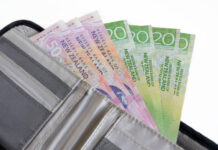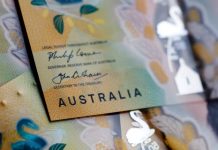Investor sentiment improves as price action in bank stocks point at waning stress.
Treasuries give back gains on the back of weaker risk aversion. The German 2-year yield is back to around 2.60% – after falling to around 2% during the worse of the latest banking stress, while the US 2-year yield settles above the 4% mark.
The S&P500 and Nasdaq come under the pressure of rising yields, which means – if banking stress wanes, the US will go back to fighting inflation, and that could mean another 25bp hike from the Federal Reserve (Fed) in May.
For now, activity on Fed funds futures still point at ‘no hike’ as base-case scenario, with around 60% chance for status quo. But we know that, the pricing could change rapidly in case of a strong US GDP update on Thursday, and a disappointing PCE read on Friday.
End of the beans?
The S&P500 – which benefited from falling yields due to the Silicon Valley Bank (SVB) collapse – is now sitting above the 200-DMA. But a move above the 4000-4200 range will likely be challenging unless the next earnings season comes with a positive surprise. Therefore, we could see gains in the S&P500 rapidly fade if the US yields trend higher with the waning bank stress.
But maybe not today!
Investor mood in Asia was not bad this Wednesday. Alibaba – which jumped more than 14% in New York yesterday, boosted sentiment in Hong Kong. Investors loved the idea that the $220 billion worth Alibaba would be split into 6 little AliBabas which could then be individual units with capacity to raise funds and explore IPOs.
In FX
It could be time for the US dollar to halt selloff and consider a potential rebound, if the US yields recover a part of losses related to bank stress.
The latter could slow the EURUSD’s positive momentum, but the euro is still expected to benefit from the European Central Bank’s (ECB) strong determination to abate inflation despite the bank worries.
From tomorrow, the most recent eurozone inflation figures for March will start coming in. On Friday, the Eurozone’s March preliminary CPI will tell whether the base-effect magic will finally operate. The Eurozone inflation is expected to fall from 8.5% to 7.1% from last March – the first full war month of last year. And soft inflation, if soft enough, could soften the ECB expectations and get some bears to sell the euro. But the medium-term outlook for the EURUSD remains positive.
Elsewhere, inflation in Australia fell more than expected in February, from 7.4% to 6.8%, versus 7.1% expected by analysts. The AUDUSD fell on the back of a broadly stronger US dollar and a softer-than-expected CPI read that fueled dovish Reserve Bank of Australia (RBA) expectations.
In the UK, however, shop prices rose 8.9% this month, a record high going back to 2005 when the data was first collected, and grocery inflation hit a fresh high of 17.5%. Rising UK inflation fuels the Bank of England (BoE) hawks. Sterling bulls have their eyes set on the $1.25 target. But a potential recovery in the US dollar posterior to the bank stress could build a solid wall of resistance at this level.













